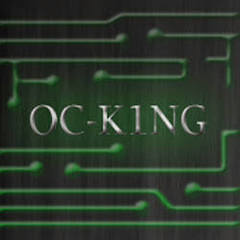-
Posts
36 -
Joined
-
Last visited
About OC-K1NG
- Birthday Aug 15, 1981
Contact Methods
-
Discord
OC-K1NG#2108
-
Steam
https://steamcommunity.com/id/ocking/
-
Origin
OC-K1NG
-
Battle.net
OCK1NG#2445
-
Heatware
Christopher
Profile Information
-
Gender
Male
-
Location
United Kingdom
OC-K1NG's Achievements
-
Just a quick update I tried everything you can imagine, from reflashing the BIOS/UEFI, rebuilding the PC, OS install to changing the hardware (where possible). Nothing worked... I was going to give up and go to bed as it was 3am... But then, at a last ditch effort, I decided to do everything all at once, rather than only changing one thing at a time so I could troubleshoot and BAM!! everything worked, full 32GB RAM detected (4x8GB). The only thing I cant get running at full speed is the CPU which I've limited to 4.4GHz with no boost. I know its not what it should be and yes something like the CPU or motherboard it trash, but hey, it works for now. Thanks again.
-
Yeah, that's the direction I was thinking also. I didn't say before but I have been a technician/engineer in the IT industry for over 20 years and have dealt with lots of similar cases, all of which got solved eventually. But thought it was worth asking on here as thousands of minds is better than 1, plus it always seams to be a pain when its your own hardware lol. Thanks for your time and help @8tg
-
Hi, I've encountered this issue and to be honest, I've run out of ideas and other hardware to test with. My system is running Linux (Ubuntu Studio to be exact) but I don't know if this is a problem with the software as I get the same info when booting to a live USB. The Problem: I have installed 4 x 4GB DDR3 1600 9-9-9-24 (matching) sticks. They recognise in the UEFI/BIOS they are detected when running the "sudo lshw | grep -A 8 bank" command in the terminal (output below) however the total memory detected by the OS (or live USB OS) is only 7.5GB. The problem persists with all amounts of RAM above 8GB, including 2x8GB and 4x8GB all at 1600Mhz but lowering speeds or timing makes no difference. In addition, the 8GB sticks are 1.5v and the 4GB sticks are 1.65v so no mixing of capacities has been done. OS - Linux x86-84 (Ubuntu Studio) Age of system - Yeah right, old but kept in good condition Age of OS installation - 3 Days but happened pre install on Live USB CPU - AMD FX 9590 (with watercooler and Thermal Grizzly Kryonaut TIM Video Card - AMD HD 7790 1GB MotherBoard - Gigabyte GA-990FXA-UD5 Revision 3 Power Supply - Antec 750w High Current Gamer System Manufacturer - None, Custom Build Below are some commands to illustrate my issue >sudo lshw | grep -A 8 bank *-bank:0 description: DIMM DDR3 Synchronous Unbuffered (Unregistered) 667 MHz (1.5 ns) product: 9905403-489.A vendor: Kingston physical id: 0 serial: 570DDE08 slot: Node0_Dimm0 size: 4GiB width: 64 bits -- *-bank:1 description: DIMM DDR3 Synchronous Unbuffered (Unregistered) 667 MHz (1.5 ns) product: 9905403-489.A vendor: Kingston physical id: 1 serial: 590DE408 slot: Node0_Dimm1 size: 4GiB width: 64 bits -- *-bank:2 description: DIMM DDR3 Synchronous Unbuffered (Unregistered) 667 MHz (1.5 ns) product: 9905403-489.A vendor: Kingston physical id: 2 serial: 570DE708 slot: Node0_Dimm2 size: 4GiB width: 64 bits -- *-bank:3 description: DIMM DDR3 Synchronous Unbuffered (Unregistered) 667 MHz (1.5 ns) product: 9905403-489.A vendor: Kingston physical id: 3 serial: 480D1213 slot: Node0_Dimm3 size: 4GiB width: 64 bits >uname -a Linux CJ-Server 6.5.0-26-lowlatency #26.1-Ubuntu SMP PREEMPT_DYNAMIC Tue Mar 12 10:29:17 UTC 2024 x86_64 x86_64 x86_64 GNU/Linux >cat /proc/meminfo | grep -i memtotal MemTotal: 7908244 kB
-
Re-pasting is a good idea as long as you do it right and use a quality TIM like Thermal Grizzly. Try cleaning the fans and heatsink as I've known temps to spike causing errors or crashes. If that doesn't work then reseating gpu and ram if you haven't done so yet. Try to only do one thing at a time and your troubleshooting will be easier with the advantage of knowing the fix to the issue in case of future challenges. Hope this helps.
-

The hell are all of these 4080s priced so low for?
OC-K1NG replied to Thomas Peterson's topic in Graphics Cards
Haha, you nailed it -
Hi, thanks for your suggestions Gorgon. I actually fixed this earlier today, I made a custom BIOS (from the downloaded official Asus Strix BIOS off the website) and now I'm now folding at 338k PPD currently on this project. I'm planning on pushing the card further now I got it working correctly. To answer your question about Xeon cores, yes, I'm only using 3 cores to fold on 24/7 with 2 more on idle. So there should be more than enough CPU resources to support the GPU. Thanks again.
-
It could be your display can't do the lower resolution of the safe mode output. Try a diff monitor/tv
-
Have you Cheked your temps?
-
Is the pad all black I assume then, I thought the laser might have been getting weird reading due to colour. Try turning off acceleration in mouse settings or reducing the sensitivity. If the mouse has a dpi setting turn it down and try increasing sensitivity/accel. to compensate.
-
What surface you using it on?
-
What's your gpu, AMD or NVIDIA? Could be crashing when changing power states, or a multitude of other reasons. Please pase in system sped
-
Have you tried a different browser? Does it happen in Web browser only or in all apps that use full screen?
-

Rate my X58 OC / troubleshoot my DDR3 OC
OC-K1NG replied to quarien's topic in CPUs, Motherboards, and Memory
4.2 / 1800 is good if your happy with that and its stable just try tightening the timing on the RAM. Answers to Questions above: 1. I wouldn't be "worried" yet but any higher than 80 deg C I would start to get concerned. Look into an AIO Cooler or Custom Loop. Also lapping the CPU heat sync and the base of the Scythe Mugen 2 might improve temps if the thermal transfer is an issue. Liquid Metal such as Thermal Grizzly's Conductonaut is the best TIM. Read up on LM application and lapping before doing it. 2. Ratio or FSB? These are 2 variables to achieve the same goal. However, the CPU Ratio only affects the CPU, whereas the FSB (BCLK) affects the whole system. Generally, the 1st thing you should do then overclocking is to set the CPU Ratio (Multiplier) and RAM Ratio as low as it goes. Then do incremental testing on the FSB until it becomes unstable to decipher the maximum FSB/BCLK of your particular motherboard. So, my answer is overclocking the BCLK 1st fond the maximum, then drop it down a bit to a good solid OC. Try to use a number that will work well with the DRAM Ratio (i.e 133, 160, 166, 180, 183, 200, etc). DRAM ratio matching is not necessary but makes things simpler when your learning to overclock. After that start increasing the CPU Ratio until it becomes unstable, crashes or refuses to boot. At that point, you could either drop it back down to the last ratio that was stable or start to increase the VCORE, VTT, QPI, ICH, IOH Voltages. 3. PLL stands for Phase Locked Loop - IOH stands for Input/Output Hub These definitely do stuff... the PLL generally CPU or QPI PLL is what's responsible for the memory clocks been synced. The IOH Voltage is supplied for the link between the CPU and the northbridge and others like the PCIE2, Memory and some others. While we're mentioning it the ICH Voltage is basically the IOH but for the southbridge and connects to things not controlled by the northbridge or IOH. This knowledge comes in handy when your system is stable at high clocks but you start to lose controllers, like missing USB, NIC's, sound or GPU's. 4. Going above Intel spec's can cause damage, however, I've personally never seen that. Just make sure you have appropriate cooling on the CPU and system devices. Not forgetting about the VRMs and such on the motherboard. 5. The UCLK or Uncore Frequency relates to the UNCORE. The UNCORE like it sounds is the part of the CPU that is not part of the main CORE. This includes things like the memory controller. Just search UNCORE in google for more detailed information. It's a whole subject in itself. 6. In short, I don't know why it won't update, will require research. ? 7. Running all banks of memory on a motherboard can limit overclocking speeds, but you shouldn't be anywhere near those limitations with the clocks your trying to achieve currently. The biggest limitation is your cooling solution. If you have the funds to do so, consider getting an AIO cooler like the Kraken X42 (single rad due to the RV01 space limitations). If you wish you could also go more custom loop or DIY AIO coolers and you can fit a 360 rad on the back side externally on the RV01. Yes, anything is achievable... it just depends on how much time, effort and cash your willing to invest. -

Rate my X58 OC / troubleshoot my DDR3 OC
OC-K1NG replied to quarien's topic in CPUs, Motherboards, and Memory
The problem you have with the RAM is the SPD profile will only be around 1333 or 1066. To enable the RAM at the 2000 Mhz that you want you would have to enable the XMP Profile. This will inherently overclock the base clock (FSB). The good news is that your RAM model is on the QVL for your motherboard. The bad news is anything over 1333 on the P6X68D-E is classed as overclocking, and anything above 1600 in my experience is a pain to get stable on the X58 platform. To enable the faster speed with your overclock you will have to set some of the RAM timing manually. Before going any further please make sure you have the latest BIOS version (0803) installed on your motherboard. Latest BIOS for P6X58D-E can download from ASUS Here Note: Don't use the Windows Utility for updating the BIOS, use the utility built into the board... You can find it in the BIOS under the Tools Menu, called ASUS EZ Flash 2 I would suggest starting at: Ai Tuner [Manual] CPU Ratio Setting [21] Intel SpeedStep Tech [Disabled] Xtreme Phase Full Power Mode [Enabled] BCLK Frequency [200] PCI-E Frequency [105] DRAM Frequency [DDR3-2000MHz] UCLK Frequency [4000MHz] This should be double your RAM Speed / RAM Ratio (i.e 2x10=20) QPI Link Data Rate [7218MT/s] I roughly calculated this, but you should choose the lowest value above "Slow Mode" CPU Voltage Control [Manual] CPU Voltage [1.40000] CPU PPL Voltage [1.88] QPI/DRAM Core Voltage [1.35000] IOH Voltage [1.24] IOH PCIE Voltage [1.60] ICH Voltage [1.24] ICH PCIE Voltage [1.60] DRAM Bus Voltage [1.65] Load-Line Calibration [Disabled] CPU Differential Amplitude [Auto] CPU Clock Skew [Normal] CPU Spread Spectrum [Disabled] IOH Clock Skew [Normal] PCI-E Spread Spectrum [Disabled] C1E Support [Disabled] Hardware Prefetcher [Enabled] Adjacent Cache Line Prefetch [Enabled] Intel Virtualization Tech [Disabled] You can enable this if you plan on running VM's CPU TM function [Disabled] Intel HT Technology [Enabled] Active Processor Cores [All] DRAM CAS [9] DRAM RAS# to CAS Delay [10] DRAM CAS# PRE Time [9] DRAM RAS# ACT Time [27] DRAM Timing Mode [1] Your RAM should work @ 1. if you have trouble change to 2 I hope you're running a decent after-market cooler or water cooling I hope I didn't miss anything, I don't think I did off the top of my head Hope this helps, feel free to ask questions.





.thumb.png.71c6b7b4965ef71020742eab7010f8a5.png)


